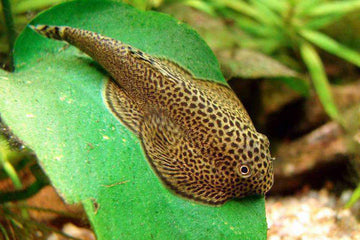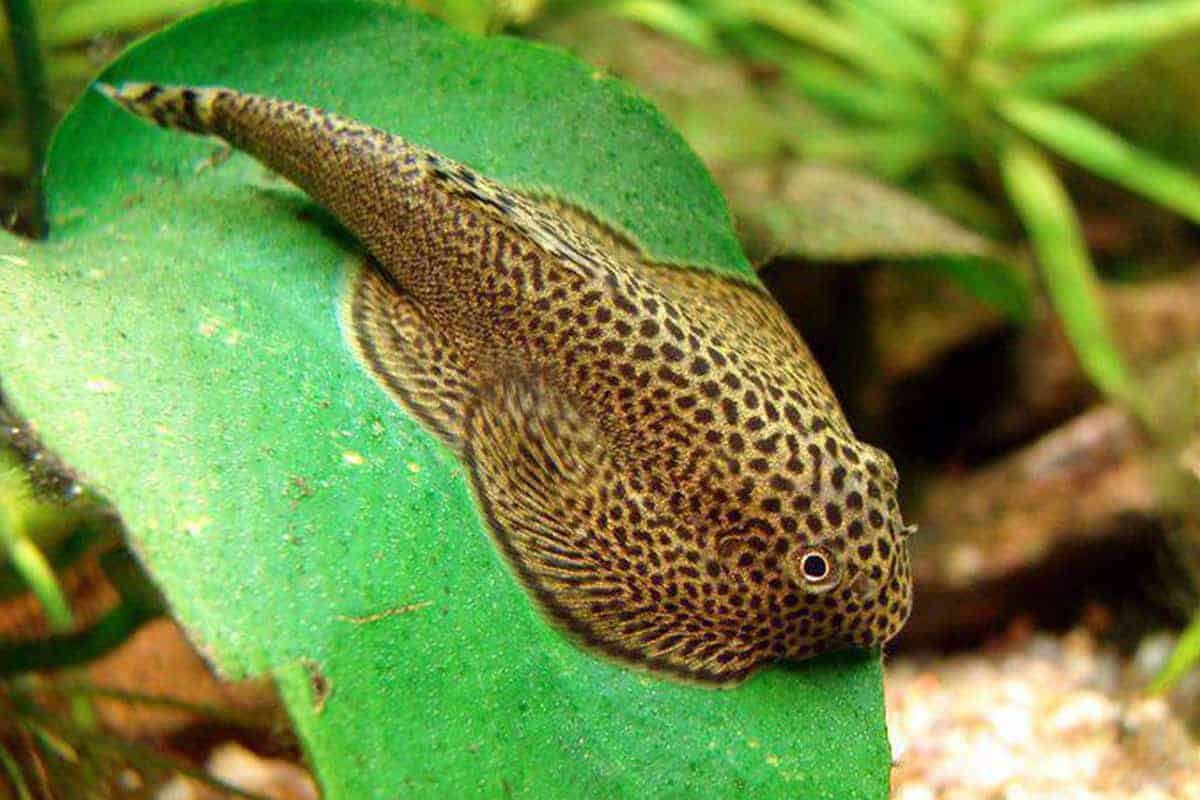Beaufortia kweichowensis – Butterfly Hillstream Loach (≈7–8 cm)
-
Estimated Delivery:Jan 17 - Jan 21
-
UPS Next Day Air Shipping Charges 65$

Beaufortia kweichowensis – Butterfly Hillstream Loach (≈7–8 cm)
📦 Description
Beaufortia kweichowensis, commonly known as the Butterfly Hillstream Loach or Chinese Butterfly Loach, is native to the fast-flowing highland streams of southern China. It has a flattened, ray-like body covered in gold-and-black speckled spots, and uses its sucker-like ventral fins to cling to submerged rocks in strong currents. This peaceful species grazes biofilm and algae, often engaging in subtle territory displays or “topping” behavior with tankmates. Best observed in mature, well-oxygenated setups.
🧰 Care Instructions
-
Tank Size: Minimum 20–30 gal (75–115 L); longer, wider tanks preferred for flow and grazing space.
-
Water Flow & Aeration: Very strong unidirectional currents (~10× tank turnover per hour); high dissolved oxygen essential.
-
Water Conditions:
-
Temperature: 64–75 °F (ideal ~68 °F)
-
pH: 6.5–8.0
-
Hardness: Soft to medium (up to ~12 °dGH)
-
-
Substrate & Decor: Fine gravel or sand substrate with flat, smooth river stones or slate; include driftwood and caves for grazing and shelter.
-
Diet: Specialized biofilm grazer; feed algae wafers, sinking spirulina pellets, blanched vegetables, and occasionally live/frozen protein like bloodworms or mysis—protein-heavy diets should be infrequent.
-
Behavior & Social Needs: Peaceful but territorial. Keep in groups of 3–7 to observe natural behaviors; males may spar in harmless “topping” displays.
-
Maintenance: Requires pristine, mature tanks with established biofilm. Weekly partial water changes (20–30%) vital. Avoid over-cleaning surfaces that support grazing.




